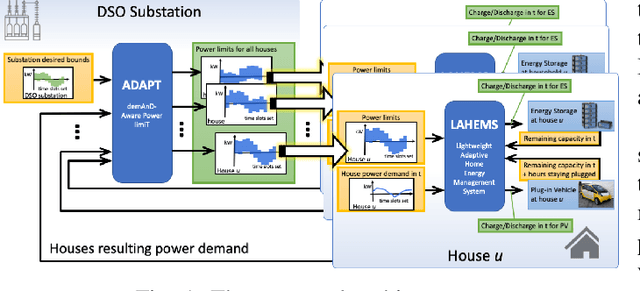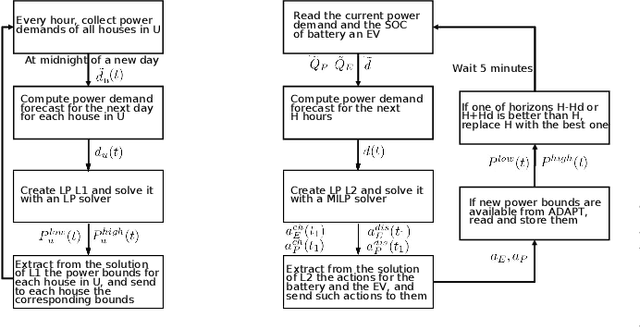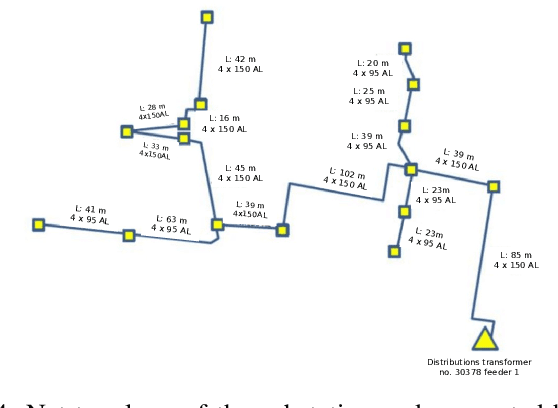Milan Prodanovic
A Two-Layer Near-Optimal Strategy for Substation Constraint Management via Home Batteries
Aug 15, 2021



Abstract:Within electrical distribution networks, substation constraints management requires that aggregated power demand from residential users is kept within suitable bounds. Efficiency of substation constraints management can be measured as the reduction of constraints violations w.r.t. unmanaged demand. Home batteries hold the promise of enabling efficient and user-oblivious substation constraints management. Centralized control of home batteries would achieve optimal efficiency. However, it is hardly acceptable by users, since service providers (e.g., utilities or aggregators) would directly control batteries at user premises. Unfortunately, devising efficient hierarchical control strategies, thus overcoming the above problem, is far from easy. We present a novel two-layer control strategy for home batteries that avoids direct control of home devices by the service provider and at the same time yields near-optimal substation constraints management efficiency. Our simulation results on field data from 62 households in Denmark show that the substation constraints management efficiency achieved with our approach is at least 82% of the one obtained with a theoretical optimal centralized strategy.
 Add to Chrome
Add to Chrome Add to Firefox
Add to Firefox Add to Edge
Add to Edge